
Scientific American, informally abbreviated SciAm or sometimes SA, is an American popular science magazine. Many scientists, including Albert Einstein and Nikola Tesla, have contributed articles to it, with more than 150 Nobel Prize-winners being featured since its inception.
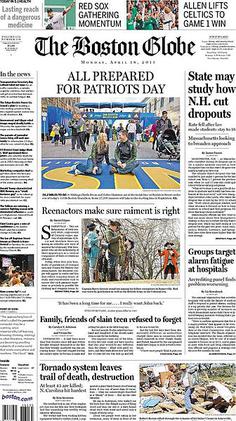
The Boston Globe, also known locally as the Globe, is an American daily newspaper founded and based in Boston, Massachusetts. The newspaper has won a total of 27 Pulitzer Prizes.

Dragon is one of the two official magazines for source material for the Dungeons & Dragons role-playing game and associated products, along with Dungeon.
The Wall Street Journal (WSJ), also referred to simply as theJournal, is an American newspaper based in New York City, with a focus on business and finance. It operates on a subscription model, requiring readers to pay for access to its articles and content. The Journal is published six days a week by Dow Jones & Company, a division of News Corp. The first issue was published on July 8, 1889.

Barbara Ehrenreich was an American author and political activist. During the 1980s and early 1990s, she was a prominent figure in the Democratic Socialists of America. She was a widely read and award-winning columnist and essayist and the author of 21 books. Ehrenreich was best known for her 2001 book Nickel and Dimed: On (Not) Getting By in America, a memoir of her three-month experiment surviving on a series of minimum-wage jobs. She was a recipient of a Lannan Literary Award and the Erasmus Prize.
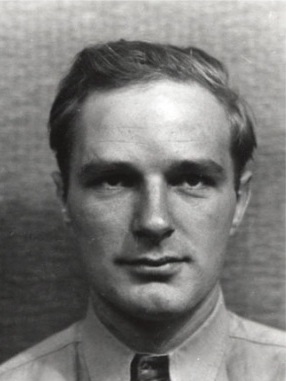
David T. Dellinger was an American pacifist and an activist for nonviolent social change. Although active beginning in the early 1940s, Dellinger reached peak prominence as one of the Chicago Seven, who were put on trial in 1969.
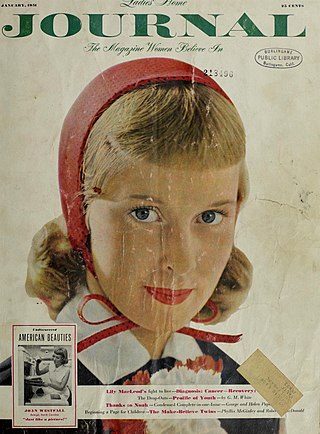
Ladies' Home Journal was an American magazine that ran until 2016 and was last published by the Meredith Corporation. It was first published on February 16, 1883, and eventually became one of the leading women's magazines of the 20th century in the United States. In 1891, it was published in Philadelphia by the Curtis Publishing Company. In 1903, it was the first American magazine to reach one million subscribers.
L'Osservatore Romano is the daily newspaper of Vatican City State which reports on the activities of the Holy See and events taking place in the Catholic Church and the world. It is owned by the Holy See but is not an official publication, a role reserved for the Acta Apostolicae Sedis, which acts as a government gazette. The views expressed in the Osservatore are those of individual authors unless they appear under the specific titles "Nostre Informazioni" or "Santa Sede".

Soap Opera Digest was a weekly magazine covering American daytime soap operas. It featured onscreen and offscreen news about the series, interviews with and articles about performers, storyline summaries and analysis, and related promotional information. Founded in 1975, the magazine historically included certain prime time soap operas in its coverage as well.

Fangoria is an internationally distributed American horror film fan magazine, in publication since 1979. It is published four times a year by Fangoria Publishing, LLC and is edited by Phil Nobile Jr.
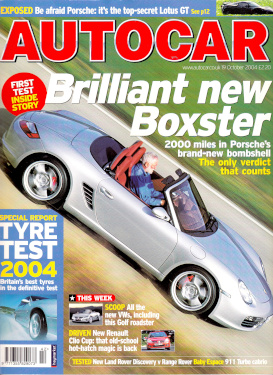
Autocar is a weekly British automobile magazine published by Haymarket Media Group. It was first published in 1895 and refers to itself as "the world's oldest car magazine". Mark Tisshaw is editor and other team members include Steve Cropley, Rachel Burgess, James Attwood, Matt Prior, Matt Saunders and Felix Page.
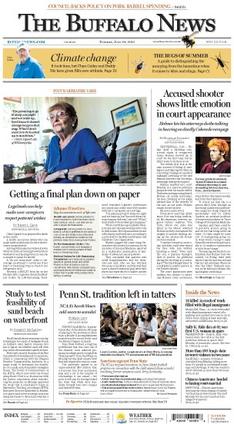
The Buffalo News is the daily newspaper of the Buffalo–Niagara Falls metropolitan area, located in downtown Buffalo, New York.

The Illustrated London News, founded by Herbert Ingram and first published on Saturday 14 May 1842, was the world's first illustrated weekly news magazine. The magazine was published weekly for most of its existence, switched to a less frequent publication schedule in 1971, and eventually ceased publication in 2003. The company continues today as Illustrated London News Ltd, a publishing, content, and digital agency in London, which holds the publication and business archives of the magazine.

Parade was an American nationwide Sunday newspaper magazine, distributed in more than 700 newspapers nationwide in the United States until 2022. The most widely read magazine in the U.S., Parade had a circulation of 32 million and a readership of 54.1 million. Anne Krueger had been the magazine's editor since 2015.
Crain Communications Inc is an American multi-industry publishing conglomerate based in Detroit, Michigan, United States, with 13 non-US subsidiaries.

Q-Notes is a lesbian, gay, bisexual and transgender (LGBT) newspaper serving North Carolina and South Carolina. It is based in Charlotte, North Carolina. Published every other week, it has a circulation of 11,000 print copies and is the largest print publication serving the LGBT community in the American Southeast. The paper traces its origins to the monthly newsletter of the Queen City Quordinators, a Charlotte LGBT organization, which they began publishing in 1983. In 1986, Qnotes changed to a monthly tabloid. In 2006, it merged with the Raleigh, N.C. LGBT newspaper The Front Page.

Liberation was a 20th-century pacifist journal published 1956 through 1977 in the United States. A bimonthly and later a monthly, the magazine identified in the 1960s with the New Left.
A Sunday magazine is a publication inserted into a Sunday newspaper. It also has been known as a Sunday supplement, Sunday newspaper magazine or Sunday magazine section. Traditionally, the articles in these magazines cover a wide range of subjects, and the content is not as current and timely as the rest of the newspaper.

Byte was a microcomputer magazine, influential in the late 1970s and throughout the 1980s because of its wide-ranging editorial coverage.

The Nation is a progressive American monthly magazine that covers political and cultural news, opinion, and analysis. It was founded on July 6, 1865, as a successor to William Lloyd Garrison's The Liberator, an abolitionist newspaper that closed in 1865, after ratification of the Thirteenth Amendment to the United States Constitution. Thereafter, the magazine proceeded to a broader topic, The Nation. An important collaborator of the new magazine was its Literary Editor Wendell Phillips Garrison, son of William. He had at his disposal his father's vast network of contacts.
















